Spending time in Stanley as you explore the Falkland Islands? My vagabond guide covers all the basics and gives you some ideas for the best things to do in and around the town.
The colourful little city of Stanley is the capital of the Falkland Islands, located on a large natural harbour on the eastern side of East Falkland island, and the only settlement of any real size in the archipelago. Formally awarded city status in 2022, as part of the late Queen Elizabeth’s Platinum Jubilee honours, this far outpost of the UK is fiercely proud of its British heritage, but has a unique character all of its own to discover.
In this guide you’ll find tips for the best things to do in and around Stanley, with options for different seasons and weather conditions, plus my recommendations for places to eat and drink, where to stay, and travel information. And take a look at my guide to visiting the Falkland Islands here.
A Vagabond Guide to Stanley, Falkland Islands
The Best Things to Do in Stanley
Take a walking tour of the City of Stanley
With a population of just around 3,000 or so, it might seem like a reach to call Stanley a city by the usual metrics, but there’s no shortage of historical and cultural landmarks to discover on a walking tour, from the solemn to the quirky. After all, living in a small community in a relatively isolated location makes you acutely aware of the ties that connect to the wider world, and the things that make you distinctive.
The local architecture is an interesting hybrid of traditional British styles with a local response based on functionality and practicality, epitomised by Jubilee Villas at the corner of Ross Road and Philomel Street, and the cottages of Marmont Row. The stone-built terraced villas are topped with colourful corrugated tin roofs, one of which is home to Falklands Conservation, the NGO which leads environmental conservation across the archipelago.
Christ Church Cathedral is the southernmost Anglican cathedral on the planet, and serves as the parish church for the Falkland Islands, South Georgia, and the British Antarctic Territories. Built between 1890 and 1892, it stands on the site of an earlier church building which was destroyed, along with several other buildings and the loss of two lives, by a peat slide that slammed into the early settlement.
The Whalebone Arch outside the Cathedral is a Stanley landmark, created from the jaws of two blue whales in 1933 to commemorate a century of British presence on the islands. The whales were hunted in the waters around the South Sandwich Islands, then part of the territory known as the Falkland Islands Dependencies, now a part of the British Overseas Territory of South Georgia, and the epicentre of industrial whaling in the Southern Ocean in the early 20th Century. The scale of the animals from which these bones originated is humbling.
Wandering down side streets, you’ll find colourful houses and fences painted in the colours of the Union flag, and one of the city’s most famous landmarks, a lawn occupied by a legion of garden gnomes. Other reminders of the British identity of the islanders to look out for are several red phone boxes, red post boxes, and a red Routemaster double-decker bus.
Outside the Secretariat buildings, overlooking the harbour, is the 1982 Liberation Memorial, dedicated to the 255 British military personnel and merchant seamen, and three Falkland Islands civilians that lost their lives in the 1982 Falklands Conflict. The large memorial, topped with a sculpture of Britannia, the personification of Britain, lists the names of the Royal Naval vessels, British Army units, Royal Air Force squadrons, Royal Marine units, and Merchant Navy vessels involved in the operation, and is an important stop for those interested in exploring the military history of these Islands.
Nearby is a memorial to Margaret Thatcher, British Prime Minister at the time of the Falklands War. A divisive and contentious figure in my home country of Scotland, she’s near-universally revered in the islands for her leadership during the conflict. Below a bust of Maggie is a quote from a speech she gave in the British Parliament following the Argentine invasion of the Falkland Islands in April 1982, “They are few in number, but they have the right to live in peace, to choose their own way of life and determine their own allegiance.”
Further west, on the edge of Stanley, is a monument commemorating the Battle of the Falklands in 1914, a key naval engagement of WWI between the British Royal Navy and the Imperial German Navy which you can read more about here. Nearby is a sculpture of the Sun, rendered in recycled corten steel, that sits at the centre of an installation of a model of the solar system at 1:1 billion scale. If you have the time, the planets can be discovered on a day-long hike, right out to tiny Pluto near the top of Mount Tumbledown.
Read more | A Comprehensive Guide to the Falkland Islands
Travel Tip | The Tourist Information Centre is located next to the town jetty, on the corner of Ross Road and Philomel Street. They can book tours for you, arrange vehicle hire, and provide maps and information leaflets for self-guided exploration of Stanley and the surrounding area.
Did You Know? | There is a memorial to the Argentine casualties of the Falklands War located in the Argentine Military Cemetery in Fish Creek, near the Darwin-Goose Green settlements. The remains of 236 Argentine combatants are interred in the cemetery. A further British memorial is located at the Blue Beach Military Cemetery in the settlement of Port San Carlos, on the west of East Falkland. A dedicated military history and battlefield tour with an expert local guide can be booked through the Tourist Information Centre.
Visit the Falkland Islands Museum and Historic Dockyard
The Falkland Islands Museum is the place to get an understanding of the islands, the history, and the people who live there. The comprehensive galleries cover the social, natural, and maritime histories of the islands, as well as exploring the lead-up to and consequences of the 1982 conflict, and the role of the islands as a staging post for the exploration of Antarctica. The museum is excellent, and seeing all the displays could easily fill most of your day. Not to be missed is a particularly moving display with audio recordings from Islanders who were young children at the time of the war in 1982 recounting their memories and experiences.
Around the Historic Dockyard there are several other historic buildings to visit: the 1840s smithy, showing the forges and tools used by blacksmiths, and the importance of horses in the islands; an old-fashioned laundry house; the original printing press and workshop; and the Island’s telephone exchange and radio hub, which kept the islands connected to each other and the outside world right up to the advent of satellite communications. Visitors can also see inside Cartmell Cottage on Pioneer Row, where rooms are staged to show island life from the 1840s right through to the 1970s.
Where + When | Falkland Islands Museum, Historic Dockyard. Opening hours: Tuesday to Friday, 1000 to 1600, Saturday 0900 to 1100 and 1300 to 1600, Sunday 1300 to 1600. Hours are often extended on days with cruise ship visits, and weekend hours are reduced in winter.
Send a postcard at the Post Office and become a philatelic nerd
I love postcards, both sending them to family and friends and receiving them from others. A lovely scene with a personalised message is a small but thoughtful gift, and if you send it to yourself, a great reminder of your travels. Postcards can be purchased in the Tourist Information Centre and many of the gift shops, but it’s worth checking out the Philatelic Bureau at the Post Office for special issue postage stamps, collector’s edition stamps, and First Day cover collections with Falkland Island themes like penguins, Land Rovers, and the British Royal Family. Drop your cards in the red Post Box outside the Post Office, and see if they arrive home before you do. The Stanley Philatelic Bureau also sells stamp issues for South Georgia and the British Antarctic Territory, so you can get a second chance at shopping if your cruise ship has been unable to make landings in Grytviken or Port Lockroy. Find out more on the Falklands Stamps website.
Where + When | Stanley Post Office and Philatelic Bureau, Ross Road. Opening hours: Monday to Friday 0800 to 1700.
Go for a Pint in the Victory Bar
After all the walking around, head for the Victory Bar. Inside an unassuming wooden building is a traditional British pub that’s popular with locals and visitors alike. With a dark wood bar, open wood fire, pool tables and dartboards, it feels very much like the pub run by my parents where I grew up, albeit with strings of Falkland Islands and Union Flags along the beams of the ceiling and military memorabilia on the walls. The bar serves most favourites, though beer fans should go for one of the local cask ales from Falklands Beerworks, like Rockhopper blonde ale or a Peat Cutter oatmeal stout.
Where + When | Victory Bar, Philomel Street. Opening Hours: Monday to Friday, 1100 to 1300 and 1600 to 2300, Saturday 1100 to 2330, and Sunday 1200 to 2230.
Visit the Falkland Beerworks Taproom
Holding the rare honour of being the most remote microbrewery in the world, Falkland Beerworks produces traditional cask-conditioned real ales as a response to the lack of beer cellars equipped with CO2 systems in local pubs and bars. The popular beers are named for local events and notable figures, such as the Longdon Pride best bitter and the Iron Lady IPA, and can be sampled in the tap room. Fans can also pick up bottled and boxed beer to take away, and merchandise to support the endeavour.
Where + When | Falkland Beerworks, John Street. Opening hours: usually Friday 1400 to 2030, and Saturday 1300 to 1700. Check Facebook for details.

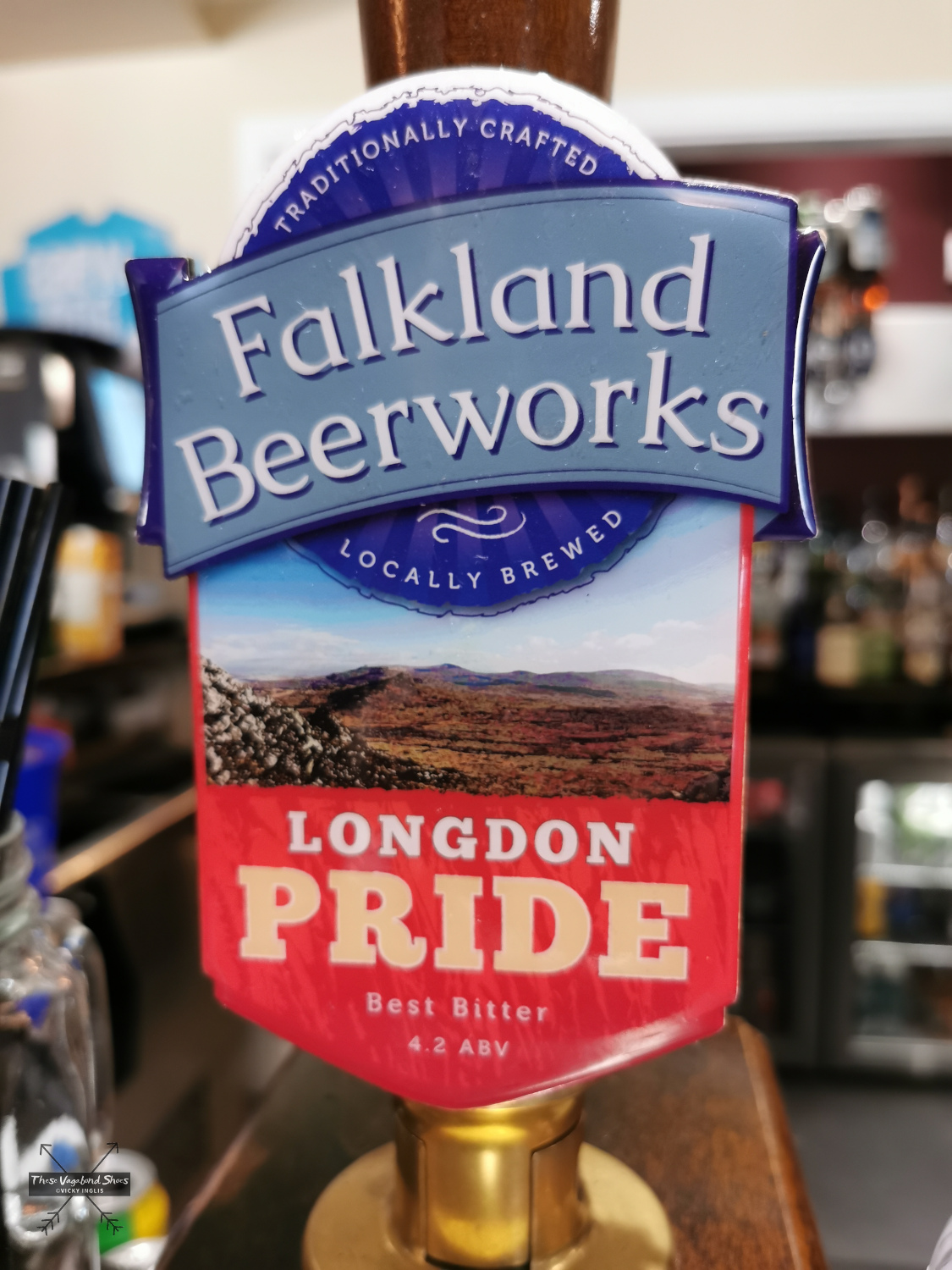
Take a Smoko at a Café
A longstanding Falkland Islands tradition, smoko is the name given to the mid-morning and mid-afternoon breaks enjoyed by workers, especially on farms around the sheep shearing season. In Camp and on the outer islands, where visitors can be few and far between, it’s a chance to get together with rarely seen friends and welcome guests over a big pot of tea and some home baking and share news. In Stanley, smoko often involves visiting a favourite café to sample the scones and cakes on offer. Make sure to try some local specialities, like scones with a dollop of diddle-dee jam or teaberry buns. Try the Teaberry Café located at the Historic Dockyard, or see my suggestions of places to eat in Stanley further down the post.
Where + When | Teaberry Café, Historic Dockyard. Opening hours: Monday to Friday, 0730 to 1530. Hours are often extended on days with cruise ship visits.
Shop for Souvenirs at Studio 52
There are a few souvenir shops lining the street between the Town Jetty and the Post Office, but Studio 52 has something a bit different on offer. Owner Julie is a photographer and graphic designer, who in addition to producing her own prints and Falkland-inspired homewares, printed with local icons like penguins and Land Rovers, also dabbles in jewellery design and making soaps. The studio also showcases products from other local artists, sculptors, ceramicists, photographers, and jewellery makers, and is the place to find a special memento of your time in the Falkland Islands.
Where + When | Studio 52, Ross Road. Opening hours can vary.
Read more | Photo Journal: Land Rovers of the Falkland Islands
Visit the Magellanic Penguins at Gypsy Cove
The white sand beaches at Yorke Bay and Gypsy Cove, in the Cape Pembroke National Nature Reserve, are the most accessible locations for watching wildlife near Stanley. Charismatic magellanic penguins, known locally as jackass penguins for their braying call, nest in burrows in the peaty soil of the headland behind the beach. Steamer ducks, much larger than the diminutive penguins, share the sands, and rock shags perch on the low cliffs. Small songbirds like the distinctive long-tailed meadowlark and excellently-named dark-faced ground tyrant are spotted on the heathland vegetation and amongst the tussac grass. And dolphins and sea lions can often be seen playing in the surf.
During the 1982 conflict the Yorke Bay area was extensively mined, then fenced off and signposted to prevent human and livestock access to the minefields. The area became a refuge for native flora and fauna, with penguins in particular, being too light to detonate the landmines, thriving in these areas.
Now cleared of mines and safe to access, a short interpretive trail leads from a parking area to a viewpoint overlooking the bay and the penguin colony. Beyond the Gypsy Cove viewpoint, a rough track continues on to Ordnance Point, or you can return to the start of the trail and head towards Yorke Bay, then Whalebone Cove, to return to Stanley.
Ordnance Point was a WWII defence post, to protect the approaches to the Narrows and the safe waters of Stanley, and the concrete foundations of the buildings and a mounted gun from the time are still to be found. The track continues around the headland over the diddle-dee heath, with views across Port William to Twelve o’Clock Mountain and Mount Low, to Engineer Point.
Engineer Point forms one side of the Narrows, the entrance into Stanley Harbour from Port William, and continuing along the rough track around the shore leads to Whalebone Cove, littered with wreckage from old ships. The tilted rusty hulk of the three-masted barque Lady Elizabeth is a local landmark.
The Lady Liz, as she’s known to locals, has been lying in the harbour since 1912. Shipping from Vancouver bound for Mozambique, she was damaged in foul weather rounding Cape Horn and limped towards Port Stanley for repairs, and struck a rock on the approach to the harbour that ripped a hole in her side. Written off by the insurer, she was sold for use as a coal hulk in the settlement, but her mooring lines broke during a storm in 1936 and she drifted to her current location in Whalebone Cove. The excellent Falklands Maritime Heritage Trust website has more information about all the wrecks around the coast.
The walk out and back to Gypsy Cove, by Ordnance Point and Engineer Point, from the centre of Stanley is around 12km (7.5 miles), though it is possible to arrange a taxi to drop you off or pick you up to reduce the total distance. Cruise visitors may find their ship has arranged a bus to shuttle to and from the site as one of their excursion options.
Did You Know? | Around 30,000 landmines were laid across the Falkland Islands during the 1982 conflict. Many were cleared immediately following liberation, but operations were halted in 1983 following a series of accidents. Minefields were fenced off and signposted for the following few decades, until the UK Government committed to the removal of all landmines in 1998, aiming to complete the process by 2009. The final landmines were finally lifted from the dune system behind Yorke Bay in 2020, and the Falkland Islands are now landmine free.
Visit Cape Pembroke Lighthouse
Located at the easternmost tip of the Falkland Islands, around 11km (7 miles) from Stanley, the lighthouse at Cape Pembroke looks out into a vast expanse of Ocean, where the South Atlantic meets the wild Southern Ocean. The next landfall is Bird Island, South Georgia, around 750 nautical miles to the southeast.
The distinctive black and white banded lighthouse was built in 1855, a cast iron construction 18 metres high. The lamp originally burnt rape seed oil, but a problem with supply led to it being supplemented with sea lion oil, which was much more readily available in the local area. The light was converted to a clockwork mechanism burning paraffin in 1906, and eventually decommissioned after WWII. The structure is maintained by the National Trust of the Falkland Islands, and it is possible to collect a key from the Museum to enter.
Just beyond the lighthouse is a large ship’s propeller amongst the tussac grass, a memorial to the SS Atlantic Conveyor, a merchant ship requisitioned by the British military in 1982 to transport supplies, including helicopters, to the islands. She was hit by two Exocet missiles, which caused a fire to burn out of control. The ship eventually sank off Cape Pembroke with the loss of 12 lives.
The headland is a spectacular location for birdwatching, particularly albatrosses, petrels, and shearwaters, and for looking out for whales, or just watching breaking surf from swells which have rolled up from Antarctica. Care should be taken at certain times of the year, as sea lions often come ashore and snooze among the tussac grass. The bulls are massive and quite scary when unexpectedly encountered (take this from my experience!).
Hiking to Cape Pembroke is around 11km (7 miles) each way, and can take around 3 hours in each direction. It is possible to arrange a drop-off or pick up with a local driver to reduce the total distance for a self-guided hike or book a tour with a local guide, which often includes a stop at Gypsy Cove and York Bay on the way.
Take a Battlefield Tour Hike of Mount Tumbledown
Overlooking Stanley from the west, Mount Tumbledown was the location of one of the critical battles in the Falklands War, just prior to the Argentine surrender. A contingent of Royal Marines Commandos and Parachute Regiment soldiers had crossed the island on foot from San Carlos, carrying all their equipment, to take the surrounding peaks of Mount Longdon, Mount Harriet and Two Sisters. They covered 90km (56 miles) in three days, facing blizzards and high winds on the yomp.
Soldiers of the Scots Guards were tasked with taking Tumbledown, and faced fierce firefights through a minefield to meet their objective. It was reported that casualties would have been much higher had the ground not been soft peat, which absorbed much of the impact of the mortars which fell. The circular craters left behind have formed small ponds on the flanks of the mountain. Rocks on the crags have been moved and re-laid to create foxholes, and the rusted remains of an Argentine field kitchen unit sit in a sheltered spot below the crag.
At the summit, there is a simple memorial cross, with a stunning panoramic view of the mountains to Stanley Harbour and the city, with Cape Pembroke beyond. A collection of small plaques, personal mementoes, and an empty bottle of whisky once shared with absent friends sit at its foot.
The routes to the top of Tumbledown and Mount William are unmarked, for the most part following off-road vehicle tracks across rough ground, followed by an easy rocky scramble towards the peaks. A guide isn’t necessary if you’re confident in navigation, but you will gain knowledge and insight into the events that took place on the slopes of the mountains in the lead-up to the liberation of the islands. The Tourist Information Centre can arrange a knowledgeable local guide for the hike, or you can pick up a leaflet for a self-guided hike there.
The circular walk to Mount Tumbledown from Moody Brook, via Mount William, is approximately 5km (3 miles), with an additional 4.5km (2.75 miles) each way from the centre of Stanley to Moody Brook. It is possible to arrange a taxi to drop you off or pick you up to reduce the total distance for a self-guided hike, or a local guide will include the drive out to Moody Brook and back in their tour. Cruise visitors may find their ship has arranged a bus to shuttle to and from the site as one of their excursion options.
Take a Tour to Volunteer Point
Volunteer Point, located on Johnson’s Harbour Farm in the northeast of East Falkland, is one of the most popular spots for day trips in the Falklands. The beautiful long, white sand beach of the peninsula is home to the largest colony of king penguins in the archipelago, as well as gentoo and magellanic penguins, and a number of other notable bird species. Dolphins and sea lions are also seen regularly around the coast.
But it’s the kings who steal the show, huddled together on the beach. There are around 2,000 breeding pairs, and with king penguins, there’s the opportunity to see the big fluffy chicks, known as oakum boys by old sailors after the material used to caulk the decks of their ship, and tiny chicks, perched on top of their parents’ feet, at the same time.
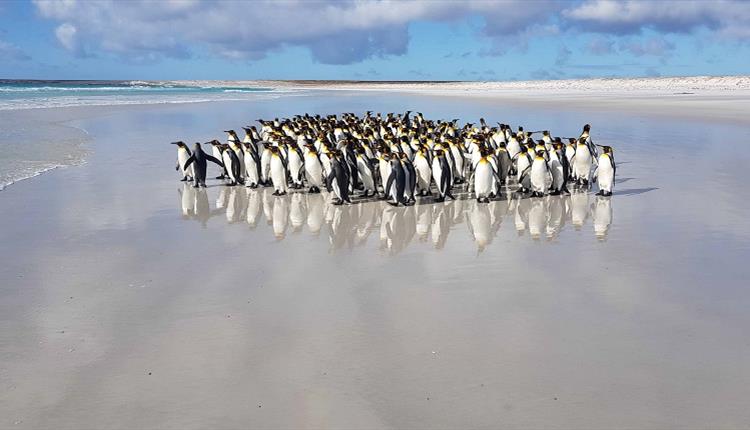
To reach Volunteer Point takes around 2.5 hours’ drive each way, on the gravel road from Stanley to Johnson’s Harbour, followed by an off-road track that’s only passable in a 4X4 when conditions are dry enough. When the largest cruise ships arrive in port, almost everyone in town with a suitable vehicle becomes a tour guide to ferry visitors out to the site and ensure people get the opportunity to visit.
An alternative way to visit Volunteer Point is on a half-day tour with Falklands Helicopter Services, which combines landing at the location with a scenic flight across Stanley Harbour, Wireless Ridge, Port William, and Johnston’s Harbour on the way. The size of the helicopter means everyone gets a window seat for amazing views of the coast and local landmarks, shipwrecks and empty beaches, winding rivers and rugged stone runs.

Most visitors only make a day trip to Volunteer Point, but full board visitor accommodation is available in the Warden’s house, a short walk from the beach, between October and April for longer stays.
Explore the coast on a sea kayaking tour with Falklands Outdoors
The coast of the Falkland Islands is wild and beautiful, and the best way to explore is by sea kayak. Paddling along white sand beaches, there’s a chance for close encounters with dolphins, sea lions, penguins, and even large whales at the right time of year. A half-day tour close to Stanley will still feel like a remote adventure.
Conditions can be challenging at times, with a prevailing westerly wind that’s rarely absent, so Falkland Outdoors can outfit experienced paddlers and help with local knowledge for planning trips.
Half-day trips are £100, or £90 per person for groups of six, including all equipment hire and an experienced guide They also offer guided mountain bike tours, a half-day is £90 (or £110 for an e-bike) and mountain bike hire, a half-day for £40 or full-day for £55.
Travel Tip | The currency used in the Falkland Islands is the Falkland Islands Pound (FKP), which is tied to UK Pounds Sterling (GBP) and can be used interchangeably in the islands*. There are no ATM cash machines in the centre of Stanley, but the Standard Chartered Bank and West Stores supermarket will give cash back for a card transaction. Card payments are widely accepted, and some places may also take payments in USD and EUR.*FKP will not be accepted in the UK, so try to spend all you have before you leave.
Where to Stay in Stanley
There’s a range of accommodation options available in Stanley for different budgets and travel styles, however, availability can be limited at certain times of the season, especially with the influx of contract workers at times of the year. Research well and book as early as possible.
Here’s my pick of guesthouses, B&Bs, and hotels in and around Stanley.
Waterfront Boutique Hotel | Located in the centre of Stanley with views across the harbour to Wireless Ridge, this small luxury hotel is beautiful and cosy, and offers residents free access to Wi-Fi, a very rare thing in the Falkland Islands.
Malvina House Hotel | Opposite the Historic Dockyard, the Malvina is the oldest and largest hotel in the Falklands. The Malvina also has a spa with a sauna and jacuzzi, available for private booking by residents and non-residents.
Lafone Guest House | A comfortable lodge-style house located around a 10-minute walk from the centre of Stanley. The wonderful host Arelette was thinking of retiring soon, so changes may be afoot.
Pale Maiden BnB | A clean and modern bed and breakfast close to the centre of Stanley, with great views of the city from the lounge. Teresa is a knowledgeable and attentive host and provides an excellent breakfast with a great selection of local produce.
Lookout Lodge | A large budget hotel which serves both tourists and contract workers located close to Stanley Services, around a 15-minute walk from the centre of Stanley.
Did You Know? | The Malvina is named after Malvina James, the youngest daughter of the Scottish settler who built the house in the 1870s, and unconnected to the Spanish name for the islands. Evelyne Station, a farm near Teal Inlet, is named for her elder sister, and their photograph hangs in the hall of the hotel.
Where to Eat and Drink in Stanley
There are a few great places to eat in Stanley, and Facebook is often the best place to find opening hours and up-to-date menus. I’d recommend trying the following:
Waterfront Kitchen Café | Part of the Waterfront Boutique Hotel, the café is a great spot for everything from a mid-morning smoko with great coffee and homebakes, to filling lunches, and Italian-inspired bistro meals with a couple glasses of wine. Possibly the best range of vegetarian options.
Groovy’s | A cool bar and restaurant specialising in tapas-style sharing platters and cocktails, with big burgers, Chilean-inspired specials, vegetarian options, and a good wine selection. They often have live music at the weekend, but through the week it’s the place to enjoy a board game with friends.
UnWined | A sophisticated yet relaxed wine bar, serving a selection of tasty nibbles and finger food to enjoy with your drinks. This is where Falklanders go for date night.
Grubz Up | A popular pop-up food truck usually found on Friday and Saturday nights outside the Victory Bar and just around the corner from Falklands Beerworks. Rhys serves delicious food in generous portions, including some hearty St Helenian home cooking.
Malvina House Hotel | A classic hotel restaurant with a la carte dining and occasional buffet nights. The pizzas are enormous and the crispy squid is sensational. The Malvina is also the location of Harbourlights Cinema, so the bar is a great spot to grab drinks and a quick meal before watching a film.
Narrows Bar| A friendly pub restaurant with a view across to the Narrows at the entrance to the natural harbour, serving traditional pub food in generous portions.
Shorty’s Diner| A relaxed diner that’s popular with locals, with an extensive menu for breakfast, lunch, dinner, and a big selection of cakes for a mid-morning or mid-afternoon smoko. Shorty’s Motel next door provides affordable accommodation in en-suite cabins.
How to get to Stanley, Falkland Islands
The Falkland Islands are located in the South Atlantic Ocean, just 700km north of Antarctica, and around 500km from their nearest landfall in South America. Most visitors arrive on a cruise ship, with others arriving on flights from Santiago or Punta Arenas in Chile, or the military Falklands Airbridge flight from the UK.
Read more | A Comprehensive Guide to the Falkland Islands
Stanley is a small city, and walking is often the best way to get around. Taxis are available locally, and can also be booked through the Tourist Information Centre.
Vehicle hire can be arranged from Stanley Services and Moody Enterprises. Almost all of the vehicles are 4x4s, as outside of Stanley most roads are gravel and in some areas of Camp off-road driving skills are essential.
Penguin Travel provides bus transfers between Stanley and Mount Pleasant airport, 56km (35 miles) away or around an hour’s drive, and can be booked for group tours to other locations.
The Falkland Islands Government Air Service (FIGAS) operates the Interislander aircraft service which connects Stanley Airport to the rest of the archipelago. They also offer opportunities to take a round-robin scenic flight.
Read my other posts about the Falkland Islands and South Georgia here.
I hope you enjoyed this guide to Stanley, Falkland Island and found it useful. If you have any questions, drop me a message in the comments below.
If you’ve really enjoyed reading my blog, you can buy me a virtual coffee here.
Pin this vagabond guide to Stanley for later.


Please note that some links on this blog are affiliate links, and if you choose to purchase through these links I may receive a small commission* at no additional cost to you. Using these links directly supports These Vagabond Shoes as an independent travel blog, and allows me to create guides to help you travel better.
*Enough for a coffee. Not enough for a yacht.



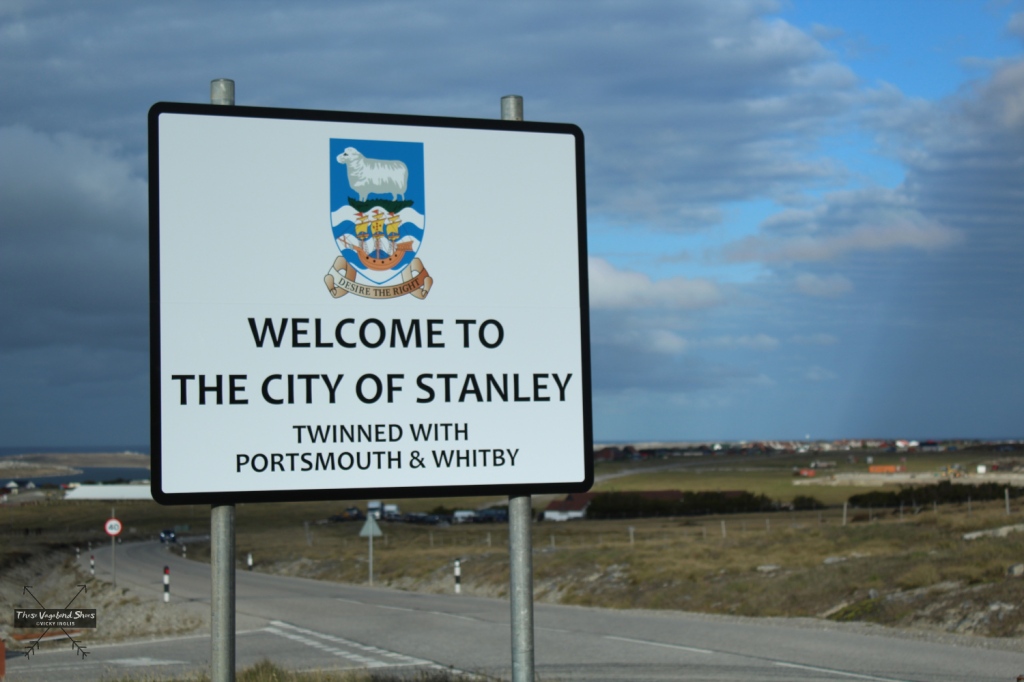

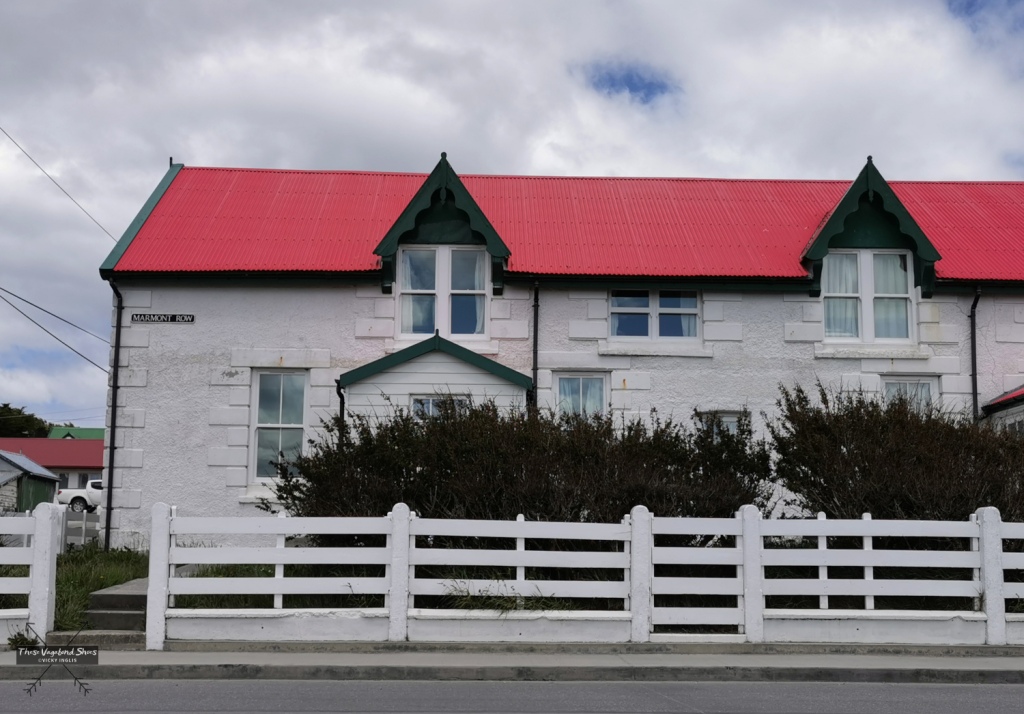
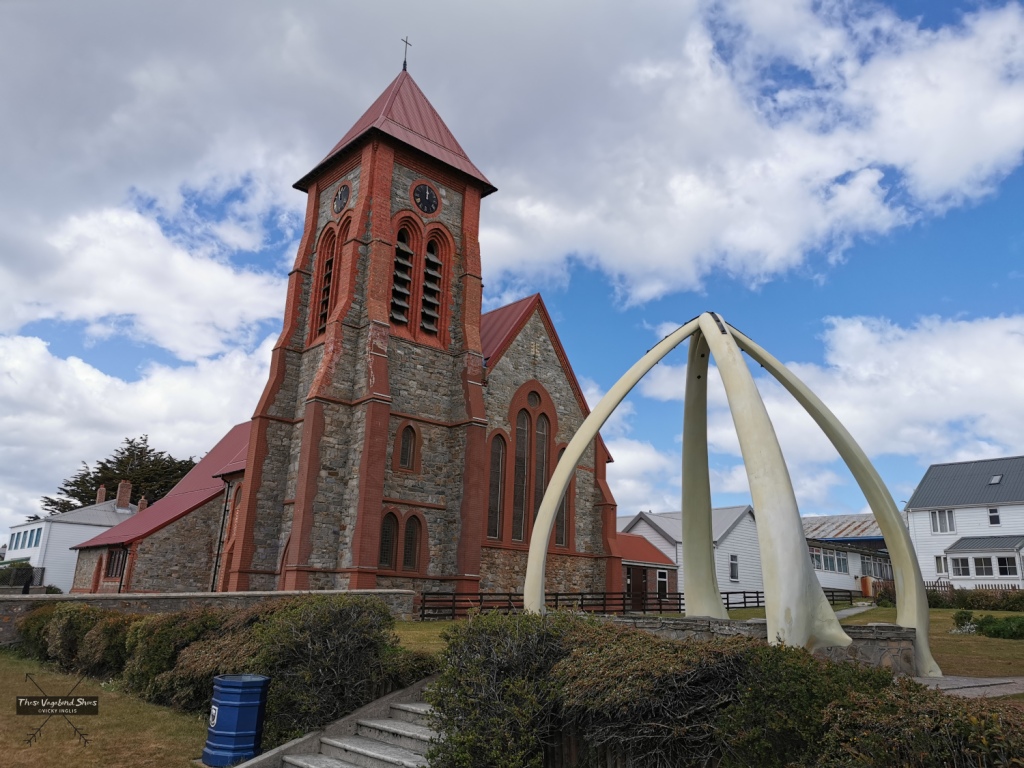



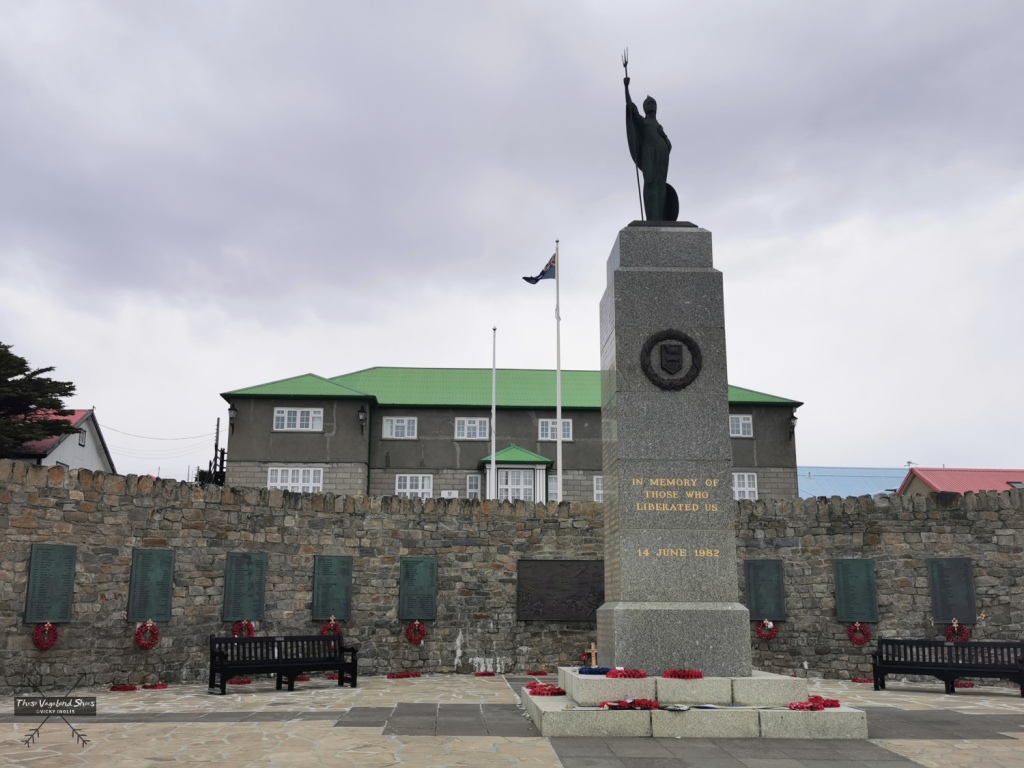
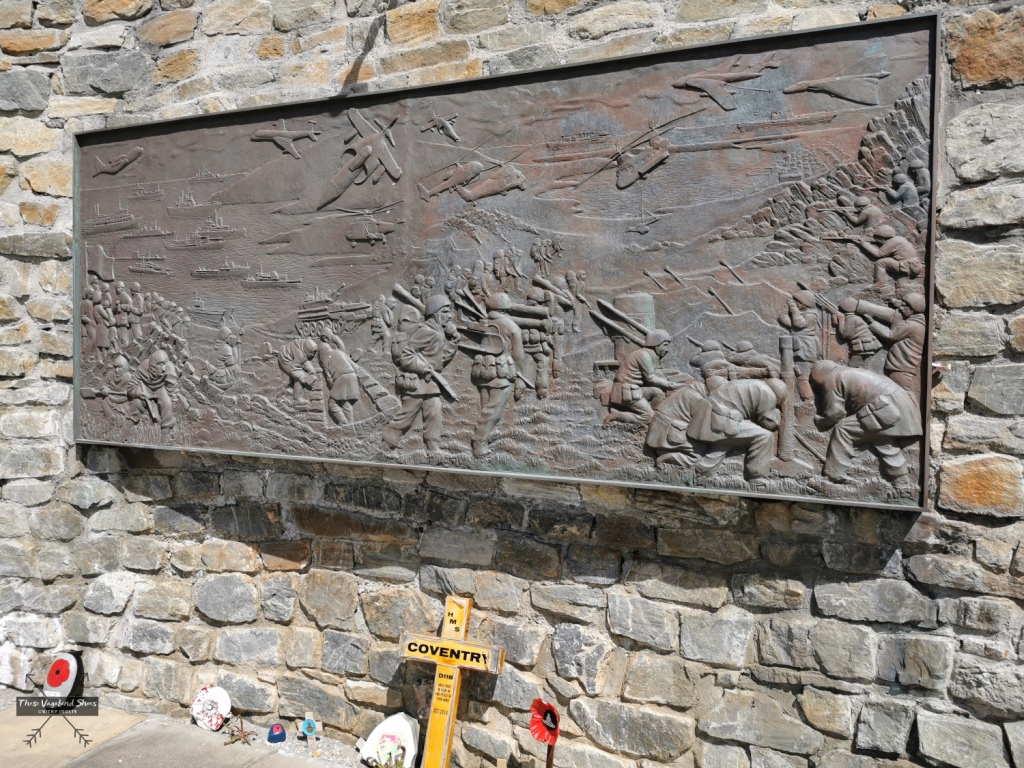






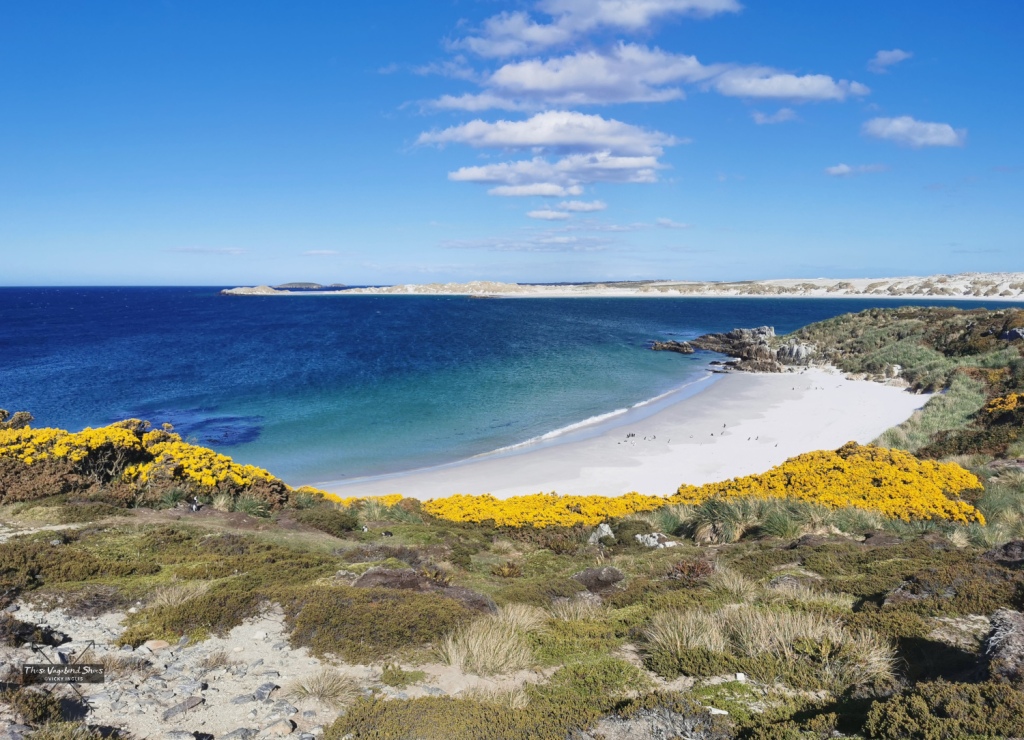






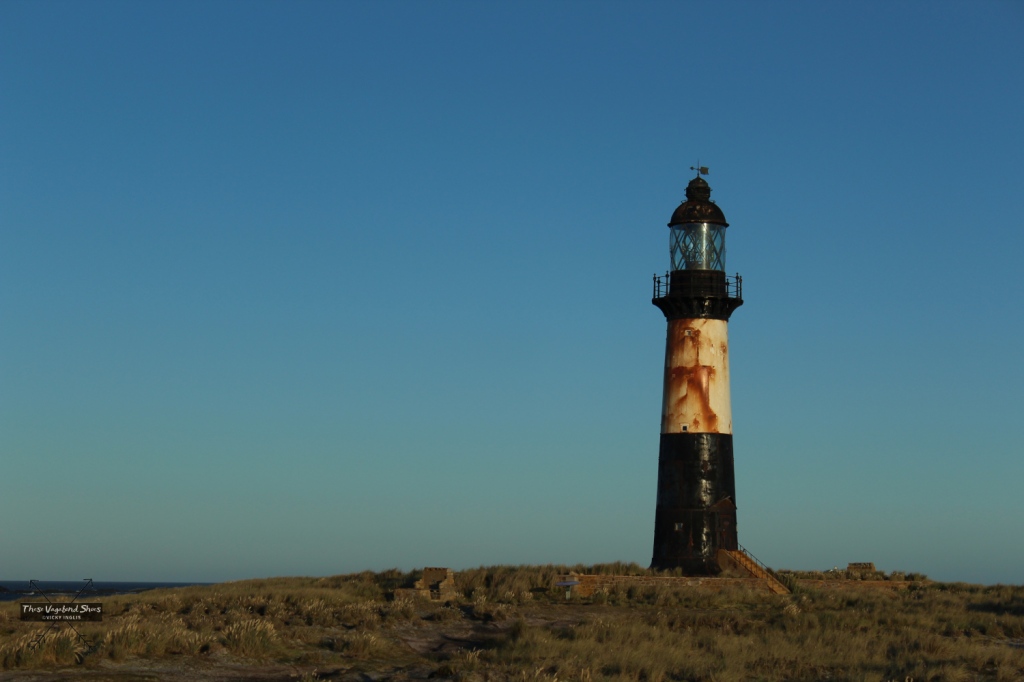



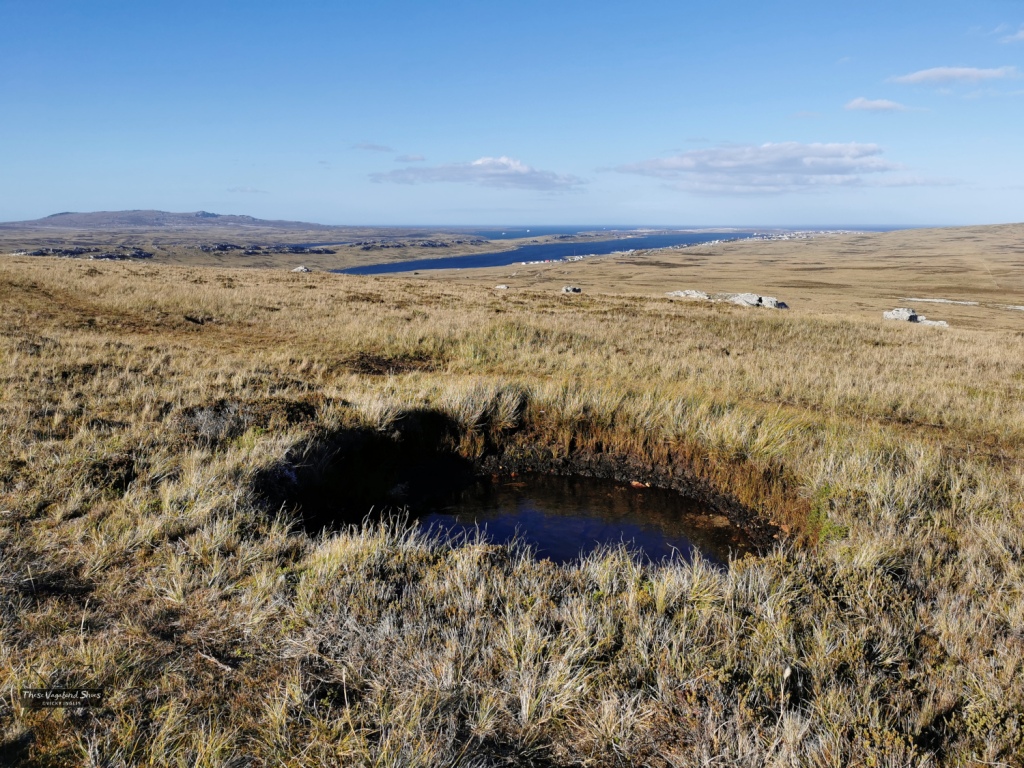
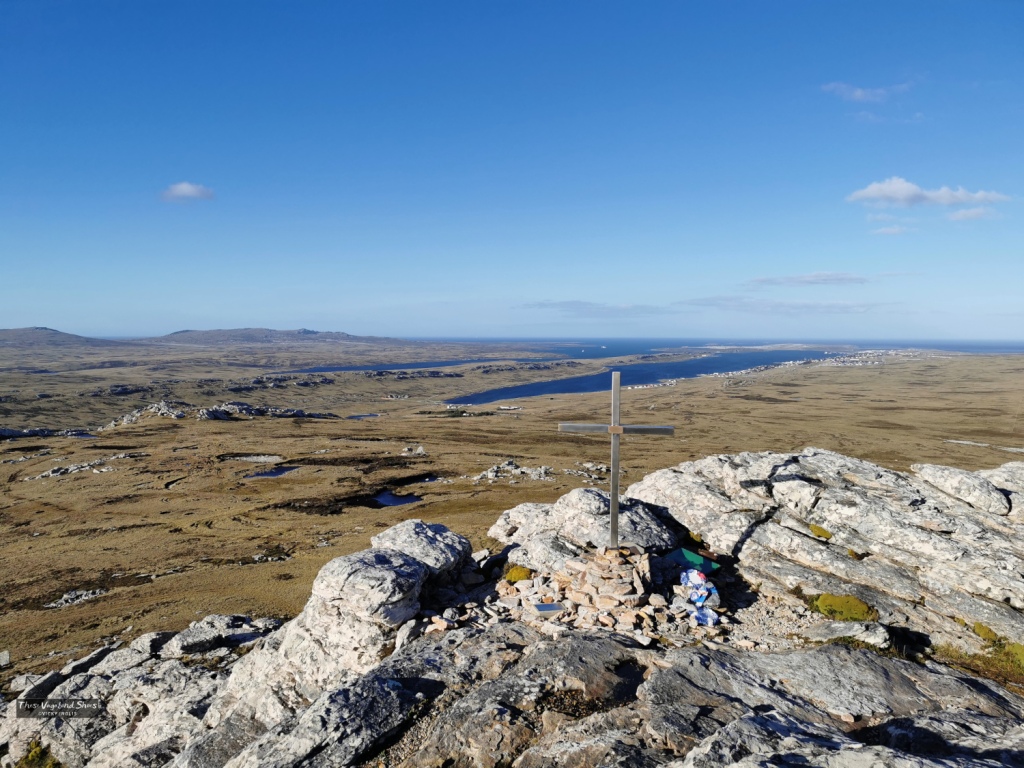
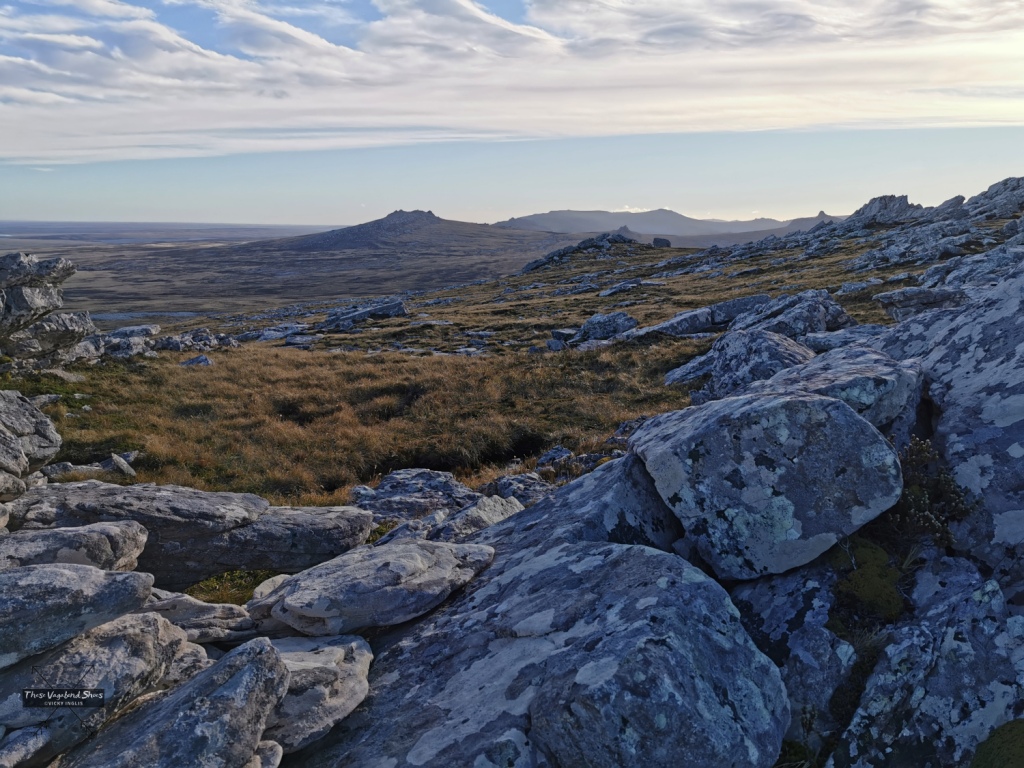



One thought on “How to spend the day in Stanley, Falkland Islands | A Vagabond Guide”